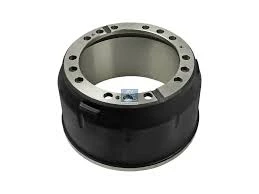
-
 Afrikaans
Afrikaans -
 Albanian
Albanian -
 Amharic
Amharic -
 Arabic
Arabic -
 Armenian
Armenian -
 Azerbaijani
Azerbaijani -
 Basque
Basque -
 Belarusian
Belarusian -
 Bengali
Bengali -
 Bosnian
Bosnian -
 Bulgarian
Bulgarian -
 Catalan
Catalan -
 Cebuano
Cebuano -
 Corsican
Corsican -
 Croatian
Croatian -
 Czech
Czech -
 Danish
Danish -
 Dutch
Dutch -
 English
English -
 Esperanto
Esperanto -
 Estonian
Estonian -
 Finnish
Finnish -
 French
French -
 Frisian
Frisian -
 Galician
Galician -
 Georgian
Georgian -
 German
German -
 Greek
Greek -
 Gujarati
Gujarati -
 Haitian Creole
Haitian Creole -
 hausa
hausa -
 hawaiian
hawaiian -
 Hebrew
Hebrew -
 Hindi
Hindi -
 Miao
Miao -
 Hungarian
Hungarian -
 Icelandic
Icelandic -
 igbo
igbo -
 Indonesian
Indonesian -
 irish
irish -
 Italian
Italian -
 Japanese
Japanese -
 Javanese
Javanese -
 Kannada
Kannada -
 kazakh
kazakh -
 Khmer
Khmer -
 Rwandese
Rwandese -
 Korean
Korean -
 Kurdish
Kurdish -
 Kyrgyz
Kyrgyz -
 Lao
Lao -
 Latin
Latin -
 Latvian
Latvian -
 Lithuanian
Lithuanian -
 Luxembourgish
Luxembourgish -
 Macedonian
Macedonian -
 Malgashi
Malgashi -
 Malay
Malay -
 Malayalam
Malayalam -
 Maltese
Maltese -
 Maori
Maori -
 Marathi
Marathi -
 Mongolian
Mongolian -
 Myanmar
Myanmar -
 Nepali
Nepali -
 Norwegian
Norwegian -
 Norwegian
Norwegian -
 Occitan
Occitan -
 Pashto
Pashto -
 Persian
Persian -
 Polish
Polish -
 Portuguese
Portuguese -
 Punjabi
Punjabi -
 Romanian
Romanian -
 Russian
Russian -
 Samoan
Samoan -
 Scottish Gaelic
Scottish Gaelic -
 Serbian
Serbian -
 Sesotho
Sesotho -
 Shona
Shona -
 Sindhi
Sindhi -
 Sinhala
Sinhala -
 Slovak
Slovak -
 Slovenian
Slovenian -
 Somali
Somali -
 Spanish
Spanish -
 Sundanese
Sundanese -
 Swahili
Swahili -
 Swedish
Swedish -
 Tagalog
Tagalog -
 Tajik
Tajik -
 Tamil
Tamil -
 Tatar
Tatar -
 Telugu
Telugu -
 Thai
Thai -
 Turkish
Turkish -
 Turkmen
Turkmen -
 Ukrainian
Ukrainian -
 Urdu
Urdu -
 Uighur
Uighur -
 Uzbek
Uzbek -
 Vietnamese
Vietnamese -
 Welsh
Welsh -
 Bantu
Bantu -
 Yiddish
Yiddish -
 Yoruba
Yoruba -
 Zulu
Zulu
how do rear drum brakes self adjust
Understanding How Rear Drum Brakes Self-Adjust
Rear drum brakes are a vital component of many vehicles, serving to provide stopping power by creating friction against a rotating drum connected to the wheel. One of the significant benefits of this braking system is its self-adjusting mechanism, which helps to maintain consistent braking performance over time. This article explores how rear drum brakes self-adjust and why this feature is essential for vehicle safety and efficiency.
The Basics of Drum Brakes
Before delving into the self-adjustment process, it's essential to understand the basic structure of rear drum brakes. A drum brake system consists of several key components, including the brake drum, brake shoes, a wheel cylinder, and various springs and levers. When the brake pedal is pressed, hydraulic fluid from the master cylinder pushes the wheel cylinder, which, in turn, forces the brake shoes against the inner surface of the drum, creating the friction needed to stop the vehicle.
The Need for Adjustment
As brake shoes wear down over time due to friction, the distance between the shoes and the drum increases. If this gap grows too large, it can lead to reduced braking efficiency, increased pedal travel, and a spongy brake feel. Therefore, the drums need to be adjusted periodically to ensure optimal contact between the shoes and the drum for effective braking.
How Self-Adjustment Works
The self-adjusting feature of rear drum brakes functions primarily through an automatic mechanism that compensates for wear. Most vehicles utilizing rear drum brakes are equipped with a self-adjusting system that can be activated during normal braking operations.
how do rear drum brakes self adjust

1. The Adjuster Mechanism The self-adjustment is facilitated through a mechanism typically consisting of a star wheel and a lever. The star wheel is connected to the brake shoes and provides the necessary adjustment over time.
2. Activation During Braking When the brakes are applied, especially during reverse maneuvers, the adjuster lever engages. The act of moving the vehicle in reverse causes the shoes to push against the star wheel, which in turn rotates it and adjusts the position of the shoes closer to the drum. This process helps to eliminate the excess gap created by worn shoes.
3. Reinforcement During Brake Use It is typically observed that the self-adjusting mechanism may not activate frequently unless certain conditions are met. For example, if the vehicle is predominantly driven in a forward direction without heavy braking in reverse, the self-adjustment may not occur as frequently.
4. Manual Adjustment In some systems, the self-adjusters can be manually actuated via an adjustment hole or by turning the star wheel directly during regular maintenance. This is often done during routine brake service or inspections to ensure the brakes are functioning optimally.
Benefits of Self-Adjustment
The primary advantage of self-adjusting rear drum brakes is the diminished need for frequent manual inspections and adjustments. This feature leads to enhanced safety, as drivers can have more confidence in their vehicle’s braking system without worrying about brake shoe wear. Additionally, self-adjustment helps ensure more consistent brake performance over time, contributing to a smoother driving experience.
Conclusion
In summary, rear drum brakes are designed with self-adjusting mechanisms that compensate for wear, ensuring optimal performance and safety. Understanding this process helps vehicle owners appreciate the sophisticated engineering behind their braking systems. Regular maintenance and awareness of the braking system’s condition are still crucial, but the self-adjusting feature significantly reduces the frequency of required manual adjustments, ultimately contributing to a safer driving experience.
-
What Are Drum BrakesNewsJul.07,2025
-
Understanding Brake Drum MaterialNewsJul.07,2025
-
Semi-Trailer Brake Drum: A Key Component for Extreme Loads and Long-Distance TransportNewsJul.07,2025
-
Drum Brake Pads for SaleNewsJul.07,2025
-
Brake Drums for SaleNewsJul.07,2025
-
Brake Drum ManufacturerNewsJul.07,2025
-
Aluminum Brake Drums: The Future of High-Performance CarsNewsJul.07,2025
